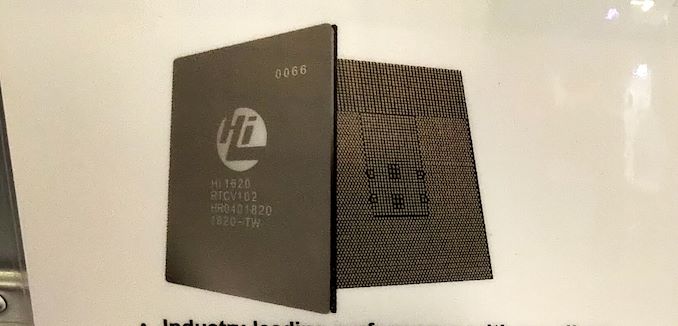Originally posted by BillBroadley
View Post
Announcement
Collapse
No announcement yet.
Arm Neoverse N1 & E1 Platforms Announced For Cloud To Edge Computing
Collapse
X
-
We saw your posts. That's quite a facile analysis, and not up-to-date with benchmarks of the latest ARM server SoCs.Originally posted by BillBroadley View PostCheck out my posts elsewhere on their thread. On the top 500 list the best arm cluster required around 4x as many cores to match the Intel Xeon.
You can find them if you look. I mentioned a couple. But, if you want to believe the real number is 4x, I'm fine with that.
Comment
-
Yes, this comparison can be interesting if you want to glorify your idol but does not really make sense in reality. Having more or less cores for the same overall performance is not really important when using this type of machine. On the other hand, the costs for the purchase (1 ARM core is about 8 times cheaper than an Intel core) and especially the consumption (about 30% less) are decisive.Originally posted by BillBroadley View Post
Sort of. It used EDR networking and no GPUs. #237 (the closest I could find) used 26,400 cores and managed 1,326.2 RmaxTFops. So 4.7x less cores and 86% of the performance.
At #194 is a they used 33,600 intel cores to get 1601 Tflops peak, so that's 3.73 times less cores than ARM for 1.04x the performance.
So ARM needs 4x the cores to compete with Intel. While that's fine for linpack, that's going to be a tough sell for other workloads.
What will increase the interest of the ARM world is the growing number of players around this solution. There are now more manufacturers of server chips in ARM than in x86. At least 5 against only 2.
Translated with www.DeepL.com/Translator
- Likes 1
Comment
-
The problem is that performance scaling is rarely linear. Sure linpack is unusually scalable, but many real world research codes do no scale as well. Few (if any) real world clusters spend most of their time running linpack. So it's quite attractive to have 1/4th the cores and still get better performance. The arm cores that compete for HPC are actually quite expensive. Do you have a reference to a node I can buy on the open market that has 4 times the cores for the same price as an AMD Epyc or Intel Xeon? The HPC clusters I mentioned in my post had to build clusters 4x as large to hit those performance numbers and that wasn't just cores, it was nodes as well. Many costs (power, cooling, switching fabric, space, etc.) scale with the nodes, so in most cases 4 times the nodes to get the same performance is cost prohibitive... that's exactly why most replace their clusters in 4-6 years to get more performance within the same physical and power foot print.Originally posted by Skwaloo View Post
Yes, this comparison can be interesting if you want to glorify your idol but does not really make sense in reality. Having more or less cores for the same overall performance is not really important when using this type of machine. On the other hand, the costs for the purchase (1 ARM core is about 8 times cheaper than an Intel core) and especially the consumption (about 30% less) are decisive.
What will increase the interest of the ARM world is the growing number of players around this solution. There are now more manufacturers of server chips in ARM than in x86. At least 5 against only 2.
Translated with www.DeepL.com/Translator
So the #194 entry uses a dual socket Xeon Gold 6148. Those start around $6,200 from dell and include 40 cores/80 threads. Where's the arm server with 160 cores for the same price? Or maybe for $1,550 with the same number of cores?
I welcome ARM competition for the Intel Xeon or AMD Epyc, but based on ARM not publishing any scientific benchmarks for the N1 or E1 I'm not particularly optimistic this will happen soon. The CPU2017 numbers would be a good start, because they listed only relative numbers to the previous generation ARM chip I'm learning towards thinking they are quite poor.
Comment
-
It's funny that you assume their Linpack performance is characteristic of their performance on other workloads. You're comparing this against Skylake-SP, with 2x AVX-512 per core:Originally posted by BillBroadley View PostSo ARM needs 4x the cores to compete with Intel. While that's fine for linpack, that's going to be a tough sell for other workloads.
I believe ThunderX2 was not especially targeted at the HPC market, but rather at more general cloud workloads.
Here are estimated SPECint2006 benchmarks for the N1:
Related:
Comment



Comment